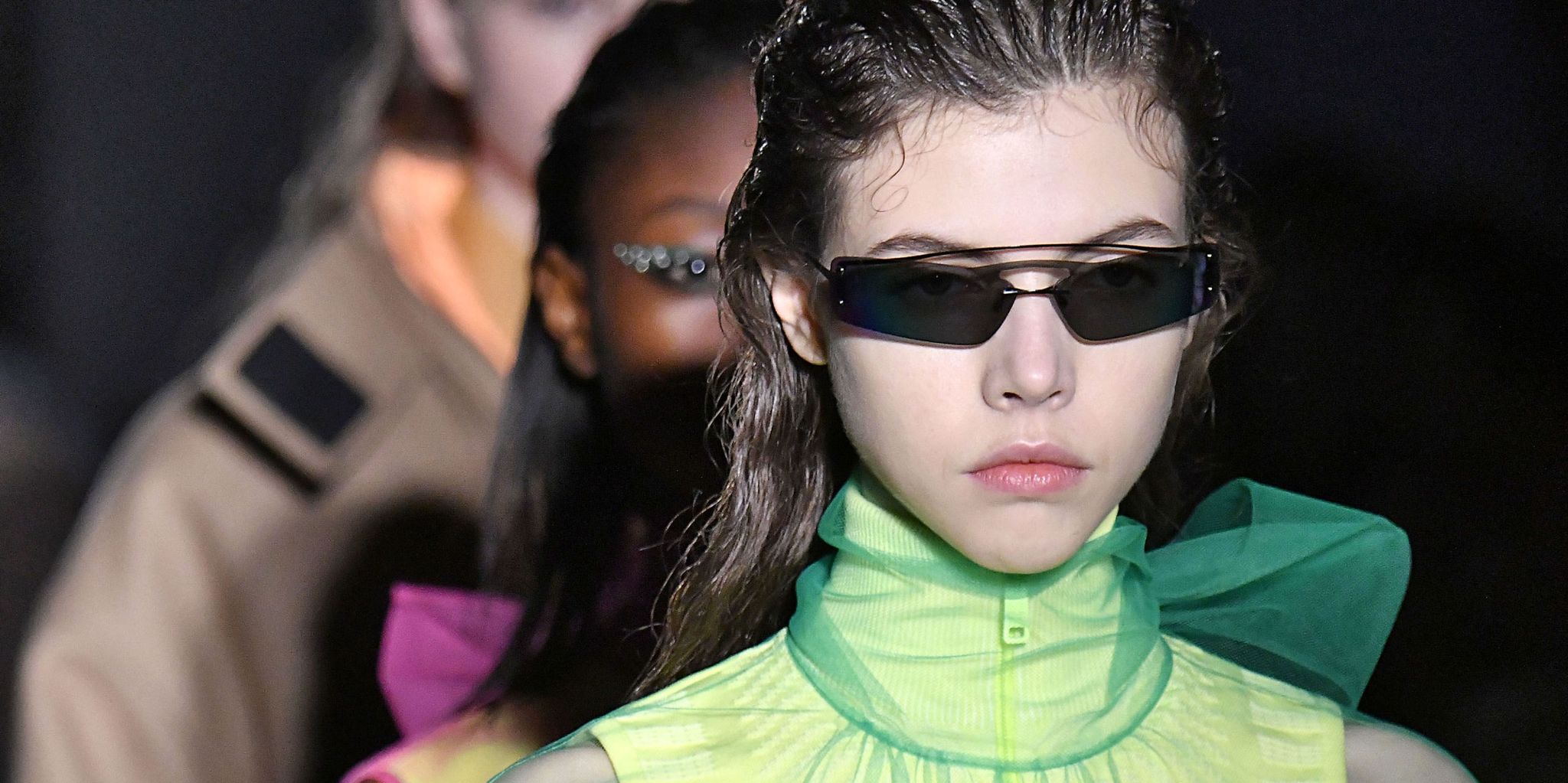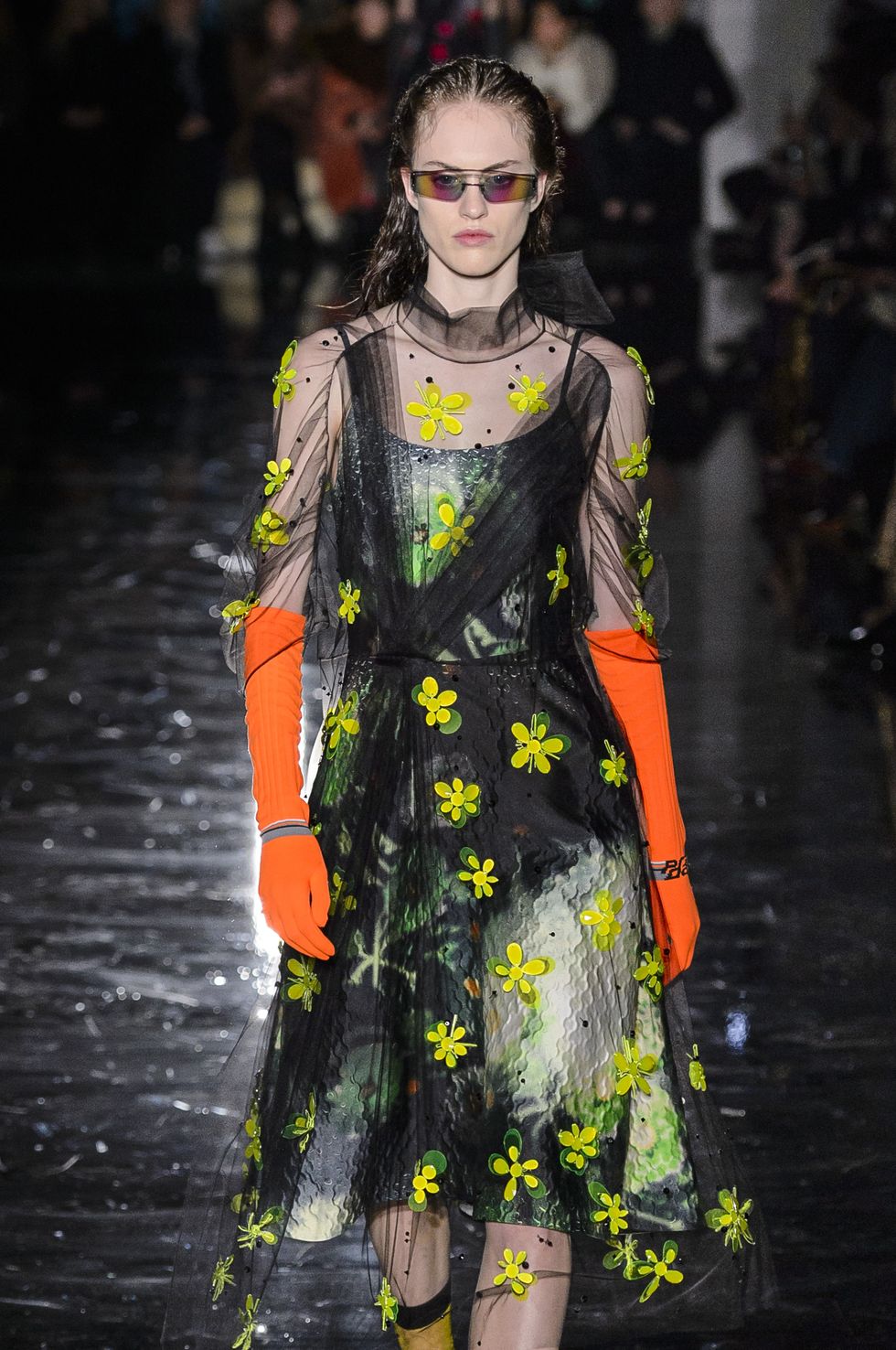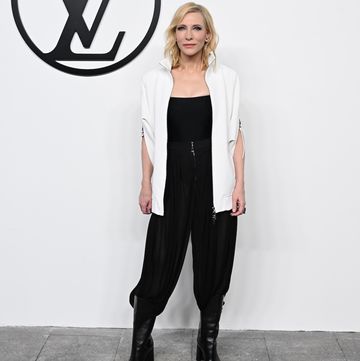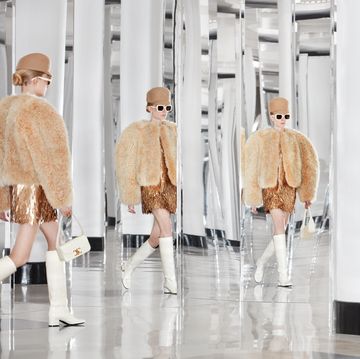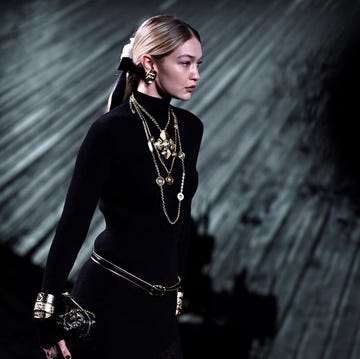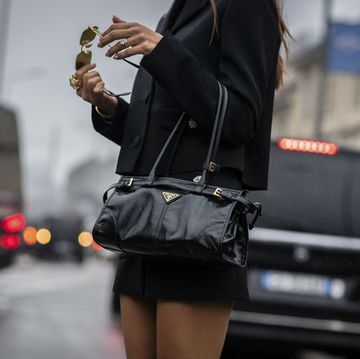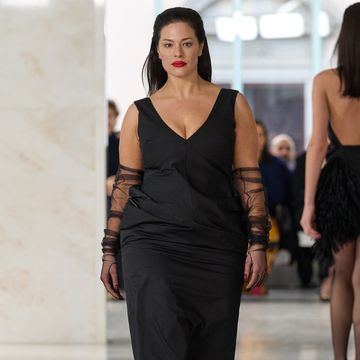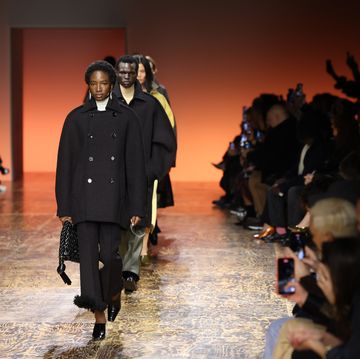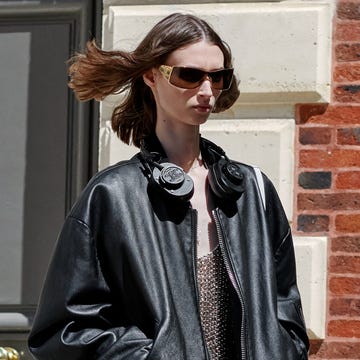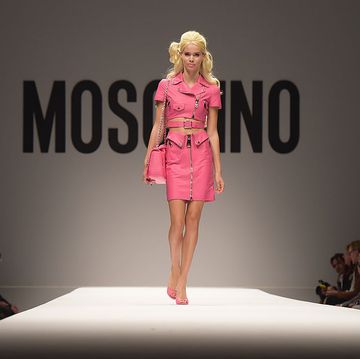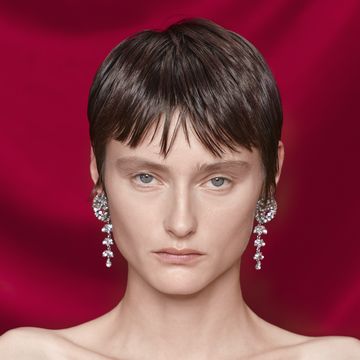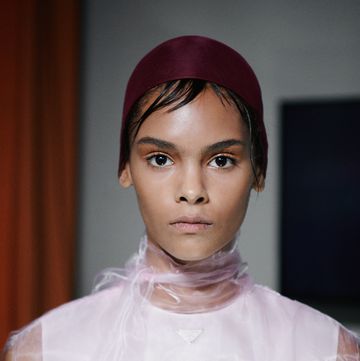Miuccia Prada presented her AW18 collection against a backdrop of neon signs referencing well-loved tropes of collections past: swinging monkeys and bananas, and the inverted triangle of its iconic logo (how often can you say iconic and mean it?).
The collection itself referenced as much, although not as explicitly as the men's and womenswear we saw last month at Men's Fashion Week. There were familiar tweeds and schoolboy knits - pieces that made up the bulk of Prada's SS17 show.
However, acid neon outerwear and tulle - with matching bucket hats - cut through the familiarity, intentionally at odds with the classicism of the knee-length frocks. That was the point, according to Prada, who said she was trying to explore dichotomies - how women today are expected to be assertive, and strong while conforming to feminine clichés.
Look at the bite in that pink; it's punchy, not saccharine.
It speaks to a generation protesting 'this pussy grabs back', and evidence that the typically sweet - florals and pussy bows - doesn't mean submissive.
It's also fashion for the FOMO generation who missed out on the reptilian paillettes and shearling of Prada's previous collections (AW11 and AW14).
And perhaps it was an inadvertent finger-up to fashion whistleblower Diet Prada, keen to point the finger at copyists, accusing them of rehashing classics, critiquing them as pastiche.
If critics like Diet Prada are suggesting that designers are out of ideas, then this collection was a solid rebuttal.
Miuccia Prada's been designing for decades. She's been responsible for many of the trends we've seen proliferate the high-street - pioneering nylon as a luxury fabric and pushing our taste level with awkward proportions and colour-ways.
Why be afraid to reference your own collections when they were so successful? It doesn't mean you're out of ideas; it's a reminder of who owns them.
